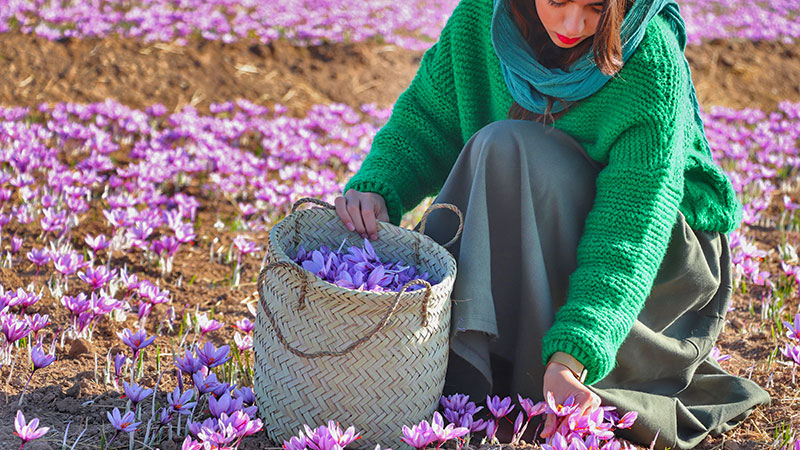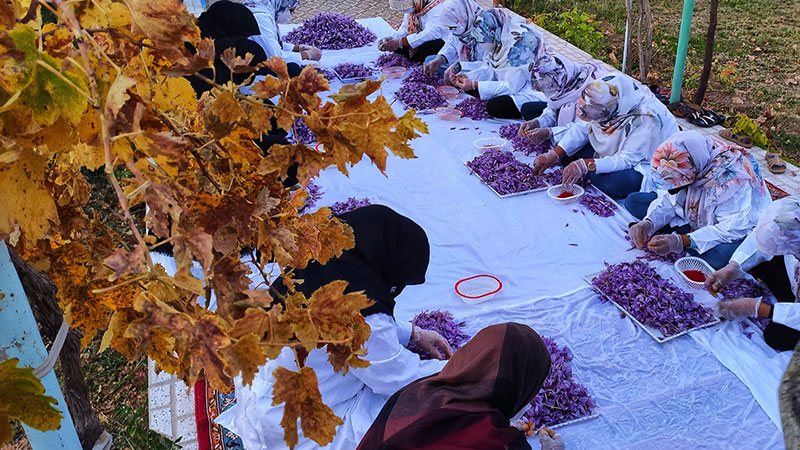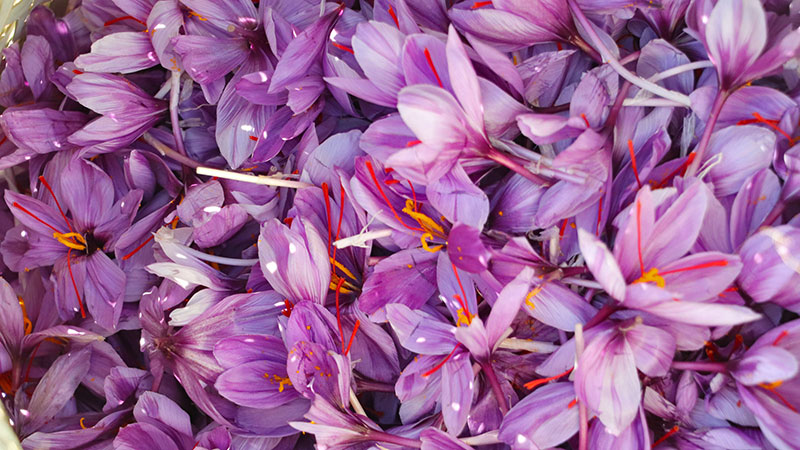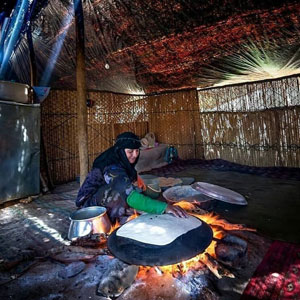 Signin with Google
Signin with Google Signin with Facebook
Signin with Facebook Culture
CultureSaffron is the Queen of Spices

Just before dawn, the delicate flowers adjust their lilac petals with great care. Timidly bloomed overnight, they wait to make everyone memorize their fragrance and intact self-exposure. Every autumn comes when the cold breeze caresses the dry fields of Khorasan to wake up the magical seeds of saffron for a new purple feast. Saffron, the most expensive spice and food in the world, has a great fame for its appetizing aroma and savage golden hue.
Not only to add a pinch of taste, odour and colour to foods but also to use for dyeing luxurious fabrics, healing physical & mental diseases were saffron's advantages since 3000 years ago that saffron has been grown in the Iranian plateau. Today, being a prime beautifying element in the cosmetic industry is added to the usages of saffron worldwide.

Saffron, the generous gift of the soil
Saffron originates from a flower scientifically called Crocus Sativus. It grows in dry climates. The Northeast of Iran, in the Great ancient Khorasan Province, Qaen, Birjand, Torbat-e Heydarieh, and Ferdows regions have got the best condition for growing saffron.
When the weather gets cooler in autumn, saffron sprouts raise from the cold soil. On each corm, one to six flowers appear. Each of these purple flowers has three red stigmas, and these scarlet stigmas are the priceless spice of the world, saffron. Iran, Spain, Greece, and India are the main producers of saffron in the world. However, Iran produces more than 90% of the world's saffron. Iran by far is on top of the list. Not only in terms of quantity but also for its superior quality, Iranian saffron ranks number one.

Different grades of the Iranian saffron
The Iranian saffron has four main different quality grades: Sargol, Super Negin, Negin, and Poshal. Super Negin is the most expensive cut of saffron for it is composed of only red parts of the stigmas and owns the best quality, taste and colour. On contrary, Spanish saffron which is called Pancho contains red parts and also yellow parts of stigmas that reduce the quality and flavour of the saffron.
Saffron harvest step by step
All processes of producing saffron are by hand and humankind's love before being tested in laboratories, packed and sealed. The laborious harvesting process starts in mid-October annually. Due to the short life of the flowers, farmers have only ten days to harvest saffron. Before the first rays of the sunlight come up in the sky, the perfect time to collect saffron begins. The best quality of saffron comes from the flowers that are picked before their petals open; thus, farmers should be very quick in the harvest. Farmers and their family members gather on the farm for ten ongoing early mornings to collect the flowers one by one with their hands.
After piling up the flowers, the next step starts with separating the stigmas from the white end parts. Everyone is involved in the saffron process, and that narrates the story of the saffron culture in Khorasan. Saffron has become a symbol of collaboration between family members in these regions.

On the third step, stigmas have to be dried as soon as possible away from direct heat and sun. Today special modern drying machines facilitate this process. After drying, saffron is ready to be packed and stored in sealed containers to keep it safe from heat, light, and moisture.
Other parts of saffron are not useless though. Locals use the dried violet petals as a powder in making bread or brew them as herbal tea. Yellow stamens are a nutritious source of protein. Birds especially like the stamens the most.
Why is saffron worth its weight in gold?
Each hectare of saffron field produces an average of 10 kg of saffron. And to have only one kilogram of saffron stigmas, 170.000 flowers should be harvested, and each pound of red gold requires more than 20 hours of labour!
Good to know that the corms are productive for only seven years. After that, the soil is not able to grow crops, and the farmer should move to another land, or collect the soil up and replace it with new soil. Knowing the difficulties of the cultivation and harvest process, now you could guess why saffron is called the "red gold"!

How can one distinguish the fake saffron?
For its hefty price, trading fake saffron is a popular fraudulence. But there are possible ways to recognize pure saffron like if you hold a stigma of saffron between your fingers for a minute, you would see its golden hue marks on your finger. The fake ones would release a deep red colour. Real saffron has a sharp bitter taste. If you feel a sweet flavour in your mouth, be sure that it is not genuine. The obvious way is the price. If you find saffron at a low cost, be sure that it is not qualified.
An elite spice with diverse usages
Saffron pharmaceutical feature is confirmed. It is effective in healing cancer, improving eyesight, aiding memory functions, reducing anxiety, depression and boosting energy levels.
High dosages of saffron could cause health issues. Consuming up to 1 gram of it per day is safe. For pregnant women, this amount is about 0.2 grams for the danger of miscarriage.

How to store and use saffron like an indigenous
Saffron is a flavouring agent, enchants dishes with its magical colour and odour. The most local way of making saffron ready to use for cooking is to grind a few stigmas or saffron powder with a pinch of sugar. Add a cube of ice into the red powder and let it melt at room temperature. Then put the container on indirect heat for more than ten minutes. After it brewed well, you would get a rich crimson red colour. Keep your precious saffron in a cool place away from heat and moisture.
Next time, stirring a saffron drink notice how beautifully saffron dust swirl in your glass and get unravelled to make a magnificent golden potion. With the first sip, you would find yourself under the spell of this lovely spice.
By Samaneh Zohrabi / TasteIran



